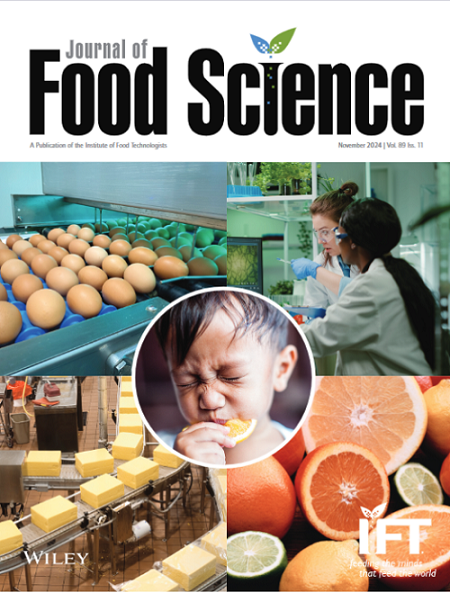Effect of pH on Lipid Oxidation and Anthocyanin Stability in Flaxseed Oil-in-Water Emulsions With Black Carrot Extract
Abstract
The strong pH sensitivity and the activity toward free radical reactions limit the use of anthocyanins as food colorants in emulsion-based food applications. The aim of this study was to gain a comprehensive understanding of color stability of anthocyanin-rich black carrot extracts in ω-3 fatty acid–rich oil-in-water emulsions as a function of pH. The stability of the anthocyanins was influenced by the degree of lipid oxidation, which in turn depended on the pH value. The formation of lipid oxidation products was accelerated in emulsions without added black carrot extract, which is associated with the antioxidant activity of anthocyanins. Furthermore, lipid oxidation increased with decreasing pH due to a higher solubility of catalyzing metals like iron. The anthocyanins showed a pH-dependent degradation kinetics: pH 2 (k = 1.44 h−1) > pH 3 (k = 0.3 h−1) > pH 4 (k = 0.06 h−1) ≅ pH 6 (k = 0.09 h−1), which correlated with reduced concentrations of lipid oxidation products. This is contrary to the common behavior of anthocyanins in aqueous solutions, where their stability increases with decreasing pH. The best color stability of the black carrot extract in the oil-in-water emulsion was observed at pH 4 instead of pH 6, due to a pH-dependent deprotonation reaction. Gaining insights into the complex relationship between pH, lipid oxidation, and the color stability of anthocyanin-rich black carrot extracts in ω-3 fatty acid–rich emulsions challenges conventional understanding and offers valuable guidance for improving the use of anthocyanins as food colorants in emulsion-based applications.
Practical Applications
This study provides insight into the stability of anthocyanin-based natural colorants, such as black carrot extract, in oil-in-water emulsions, facilitating their application in lipid-containing food systems. It provides a more comprehensive understanding of the pH-dependent degradation mechanisms of anthocyanins, extending current knowledge from aqueous solutions to emulsion-based conditions.




 求助内容:
求助内容: 应助结果提醒方式:
应助结果提醒方式:


